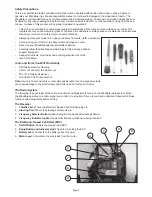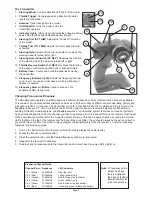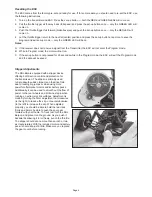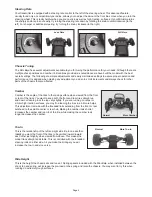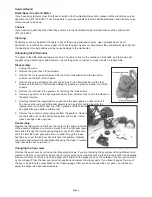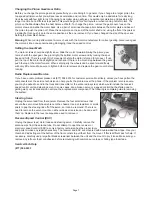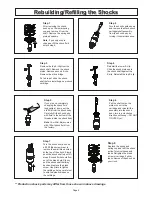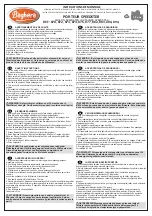
Page 5
Steering Rate
Your transmitter is equipped with a steering rate control to the left of the steering wheel. This advanced feature,
usually found only on competition-type radios, allows you to adjust the amount the front tires move when you turn the
steering wheel. This is really helpful when you are on slick, as well as high traction, surfaces. If your Mini-Baja turns
too sharply and/or spins out easily, try turning the steering rate down by rotating the knob counterclockwise (to the
left). For sharper or additional steering, try turning the knob clockwise (to the right).
Camber
Camber is the angle of the tires to the racing surface when viewed from the front
or rear of the truck. You want to keep both the front and rear tires straight up
and down or leaning in at the top very slightly. If you are running on carpet or
similar high traction surfaces, you may find leaning the tires in a bit more helps.
This adjustment is made with the threaded links extending from the front or rear
bulkhead to the spindle carrier or rear hub. Making the camber rods shorter
increases the camber and lean-in of the tire, while making the camber rods
longer decreases the camber.
Ride Height
This is the height the chassis sits and runs at. Spring spacers included with the Mini-Baja, when installed between the
shock top and spring, will increase the pre-load on the spring and raise the chassis. You may want to try this when
running on extremely rough surfaces.
Toe-In
This is the relationship of the left and right side tire to one another.
Ideally you want the front of the tires to be pointed inward toward
each other just slightly when viewed from above. This makes the
model track straight and stable. This is controlled with the threaded
steering rods on either side. As you make them longer you will
increase the toe-in and vice versa.
Chassis Tuning
The Mini-Baja has several adjustments available to you for tuning the performance for your needs. Although there are
multiple shock positions and camber link locations provided, as noted above we have built the model with the best
overall settings. The following are simple adjustments and easily maintained settings to assure proper operation and
performance. It is advised when making any adjustment you do so in small increments and always check for other
parts of the chassis that are affected.
Normal
More Camber
Normal
More Toe-In
Less Rate
Full Rate


